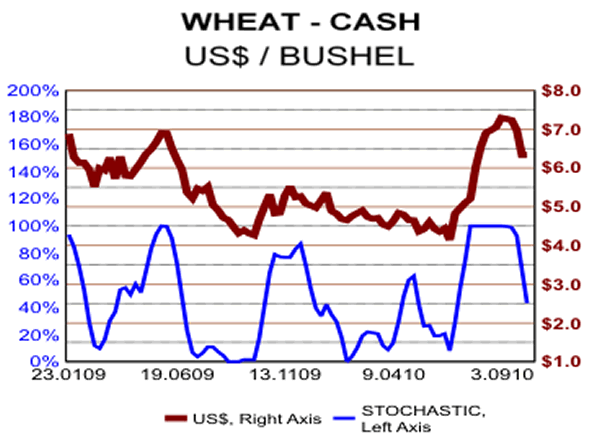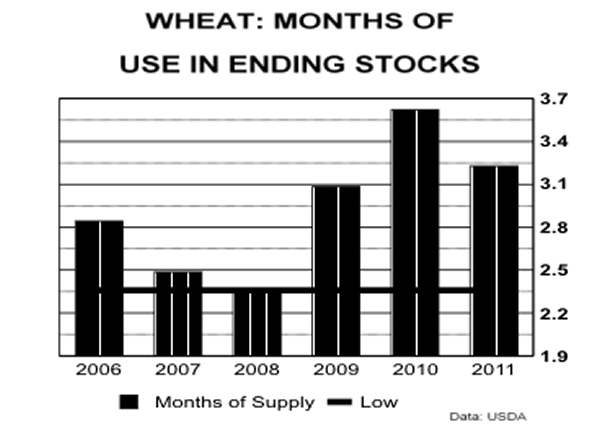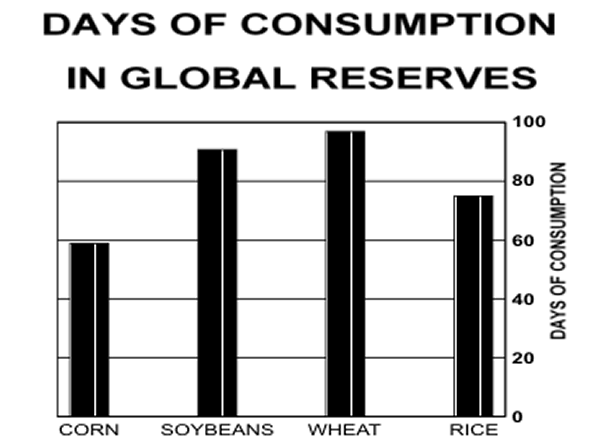The Wheat and Grains Bull Market and Australian Swarming Locusts
Commodities / Agricultural Commodities Oct 05, 2010 - 03:32 PM GMTBy: Ned_W_Schmidt
 Munching sound in back ground is that of locusts as they make Australia their Spring snack. Australia is in the process of preparing for war against the worst locust swarms in 75 years. In September, rains began to expose massive egg beds to the warming sun, encouraging them to hatch ahead of schedule. ABC News reported,
Munching sound in back ground is that of locusts as they make Australia their Spring snack. Australia is in the process of preparing for war against the worst locust swarms in 75 years. In September, rains began to expose massive egg beds to the warming sun, encouraging them to hatch ahead of schedule. ABC News reported,
"The Australian Plague Locust Commission says egg beds up to nearly 20 kilometres long have been exposed in north-western Victoria after the recent flooding.(10 Sep 2010)"
More recently bloomberg.com reported,
"Surveys in the Bourke, Walgett and Brewarrina regions had spotted more than 700 locust bands stretching up to 1.5 kilometers in length, Industry & Investment NSW said.(1 Oct 2010)"
While the locusts may spare most of Australia's crops, dry weather in Russia may not be so benevolent to Russian wheat. Russia announced last week that the embargo on grain exports was being extended to July of 2011. Russian government does not believe it will have sufficient information on status of Russian grain crops and reserves before that time. Rather than helping to feed the world, Russia may have to import grains to feed livestock herds.

News of the Russian grain embargo was the catalyst for a major rally in wheat, and inspired like action in other grains. As can be observed in the above chart, wheat promptly added $3 to the price. That action sent it to a new 90-week high. As is normally the case when a price comes out of a deeply over sold condition, price went to somewhat above equilibrium. It is now seeking out a new bottom which will be built the base for the next advance.
Other grain prices have followed wheat higher. If wheat is not sufficiently available at the old price, animals will need to be fed other grains. With animals some substitution of feed grains is possible. That is not true for all human preferences. For you see, a pizza made with corn rather than wheat is not a pizza, but a taco. And while Apple may become the most valuable company in the equity market by surpassing Exxon, try eating an iPad or running your car on one.
In the above chart is plotted the number of months of wheat consumption the world had or might have in reserve at the end of each crop year, per the USDA. Ending world wheat stocks for the 2011 crop year, May 31, are now expected to dip below 3.3 months. That number is somewhat tenuous as we know not what the Russian wheat harvest will be next year, and neither does the USDA.
We need to also remember that any loss of Russian winter wheat in this crop year will not be replaced till 2012. Neither wheat nor any other Agri-Food is made in a factory. Whatever the crop, it is put in the dirt one time a year and comes out of the field one time a year. No other production possibility exists, regardless of how many iPads exist or how many people have their pictures on Facebook.

Few politicians or investors have come to truly comprehend the meaning of the data in that chart. Forecasts is for only 97 days of wheat consumption to exist in the world next year. Like any average, however, that number masks a lot of details. Many nations have far less, and must import wheat to feed their people. List of nations that must import the wheat for their daily bread includes Egypt and all of the nations of the Middle East. England may join the group of nations that must import wheat this year for the first time in that nation's history, and England has a lot of history.
However, as the following chart portrays, wheat is as good as it gets.
Above chart is of estimated number of days of consumption to be in global grain reserves at the end of the coming crop year, per the USDA. In that chart are the Big Four, corn, soybeans, wheat, and rice. Vertical axis is in number of days of consumption in reserve.
As is apparent, wheat is the best. Soybeans follow in second place. Many consumers probably are not aware of the vast amount of soybeans they consume or cause to be consumed each day. In the West particularly, few meals are void of this golden nugget.
For rice, the most consumed grain in the world, only 75 days of consumption are in reserves. That level of storage represents only 10 days more than that which existed in the shortage plagued years of 2007-8. Any serious disturbance of production anywhere in the world could cause global shortage of rice. A number of countries, such as the Phillippines, rely on imported rice to feed their people,

Global reserves of Agri-Food grains are not as comfortable as some contend. The world cannot tolerate crop failures like that occurring in Russia on a regular basis. It may perhaps be able to tolerate one failure, but probably not two in one year. In coming years, could we find ourselves bidding with China, and then India, for global Agri-Food commodities in a far more competitive manner?
For investors, Agri-Food offers a rare opportunity to participate in the price inelastic portion of a long-run supply curve. The what? Agri-Food sector, on a global basis, is now operating in that sector of the long-run supply curve where prices go up more than demand. Percentage change in price is greater than the percentage change in demand, and demand is rising.
Of the three ways of participating in the Agri-Food sector, only two are really viable for individuals. Commodity futures simply do not work for many. Agri-Equities and Agri-Land do work for most investors, and should be actively researched. A starting point on Agri-Land might be our recently released 4th Annual U.S. Agricultural Land As An Investment Portfolio Consideration - 2010 which is probably the definitive annual report on returns earned on U.S. Agri-Land:
http://www.agrifoodvalueview.com/AgriLandAnnual.html
By Ned W Schmidt CFA, CEBS
AGRI-FOOD THOUGHTS is from Ned W. Schmidt,CFA,CEBS, publisher of The Agri-Food Value View, a monthly exploration of the Agri-Food grand cycle being created by China, India, and Eco-energy. To contract Ned or to learn more, use this link: www.agrifoodvalueview.com.
Copyright © 2010 Ned W. Schmidt - All Rights Reserved
Ned W Schmidt Archive |
© 2005-2022 http://www.MarketOracle.co.uk - The Market Oracle is a FREE Daily Financial Markets Analysis & Forecasting online publication.



